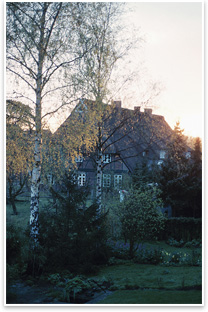
| SUSTAINABILITY That Old, Old House With a little help, it may be a better energy performer than its Modern counterpart Summary: Some new research in Great Britain points to how older houses, with their greater girth and heavy materials, might be better energy-savers than their younger counterparts. There are fixes, too, that may help: A lot of them center on replacing glass and new glass technologies. Last month, reports from England delivered some staggering news about building performance. According to the U.K.’s Guardian newspaper, recent tests conducted for British Gas revealed that Tudor houses built in the 1500s performed better in terms of envelope tightness than their mock Tudor knock-offs constructed in the 1960s. Burly in construction, the 500-year-old abodes leaked 10 cubic meters of air an hour for every square meter of wall, compared to 15.1 cubic meters for mock-Tudor homes of the ‘60s. Traditionalists were jubilant with the news Homes built during the 1970s performed slightly better—they lost 11.7 cubic meters—but they couldn’t beat those heavy-timbered structures and their wattle-and-daub infill walls. Traditionalists were jubilant with the news. “Wind turbines, solar panels, and other high-tech green devices might get the media attention,” said Hank Dittmar, chief executive of Prince Charles’ Foundation for the Built Environment, “but the smartest way to save energy might be to live in a Tudor house and insulate the attic and repair the windows.”
Energy was cheap; girth was great The International Style’s thin wall sections and acres of single-pane glass in un-insulated frames were a recipe for dismal thermal performance Other factors contributed to the post-war building’s poor environmental performance. Building booms usually encourage poor construction practices. High demand and the need for speed invite corners to be cut, and those corners are usually cut in places no one will see—such as insulation levels, caulking, thermal barriers. Quick construction also results in a decline in building craft and skill, which adds to sub-par environmental performance. The answer is clear as glass |
||
Copyright 2006 The American Institute of Architects. All rights reserved. Home Page |
||
news headlines
practice
business
design
recent related
› Sustainability Squared
› Sustainability Is in the Details
Architect Michael J. Crosbie, PhD, a senior associate at Steven Winter Associates, Inc., can be reached at mcrosbie@swinter.com.

